
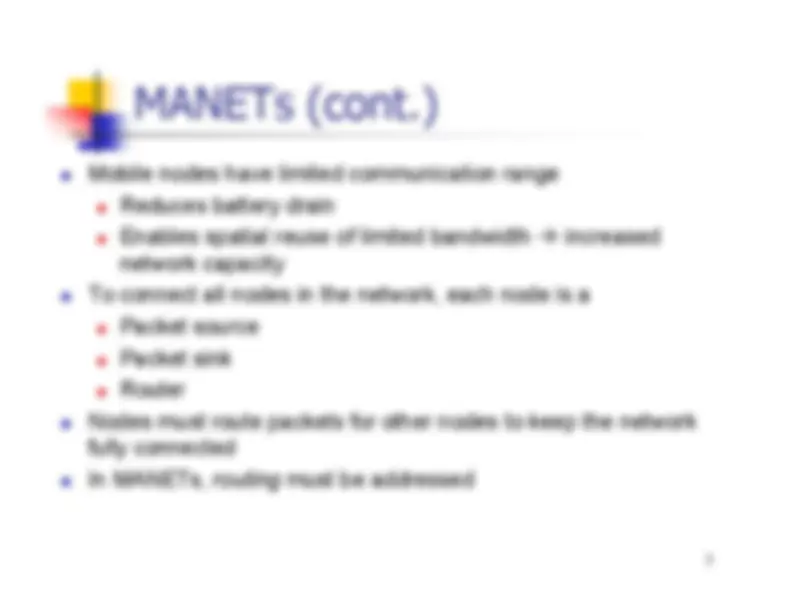
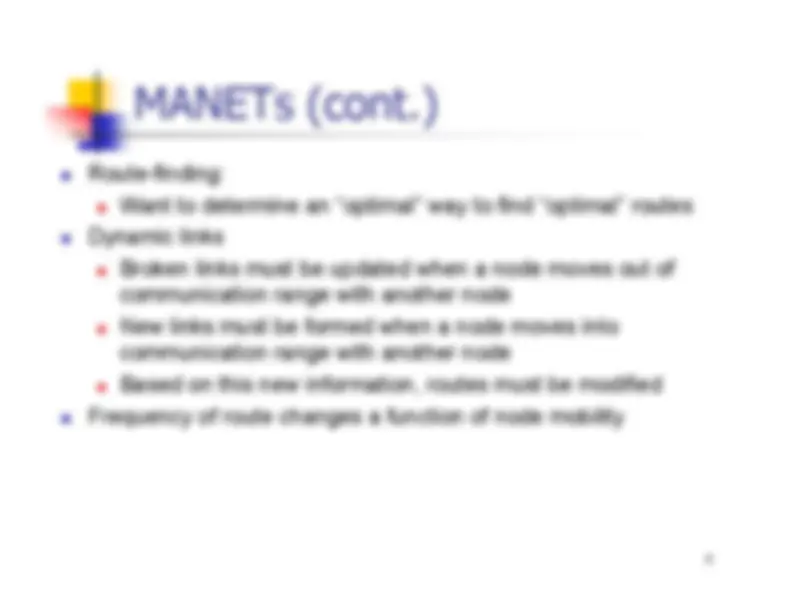
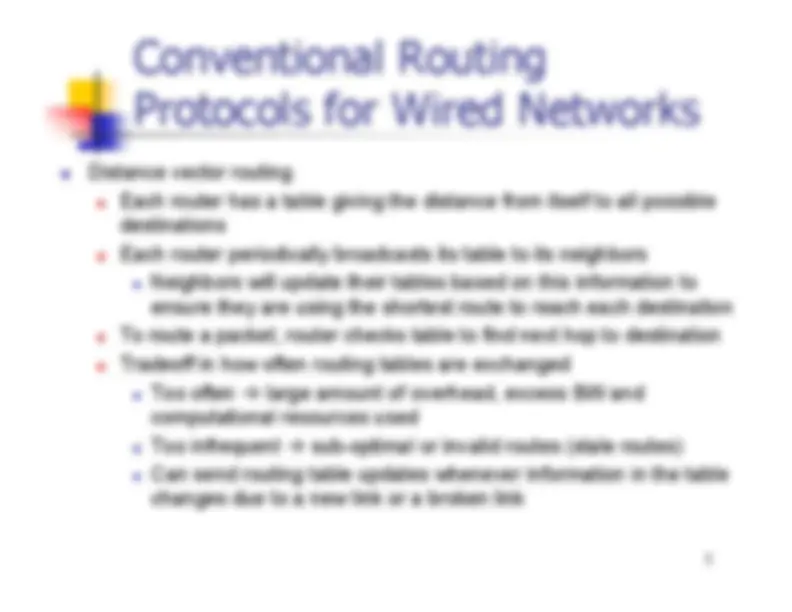
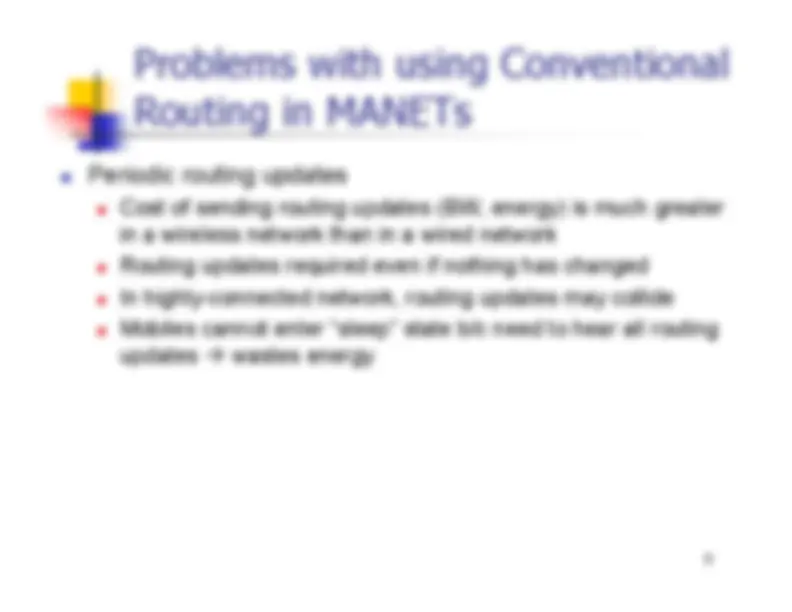
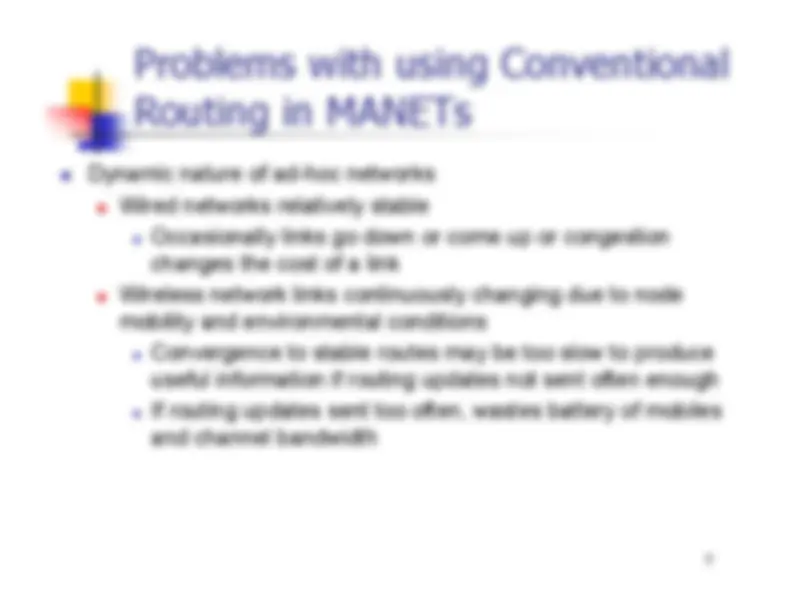
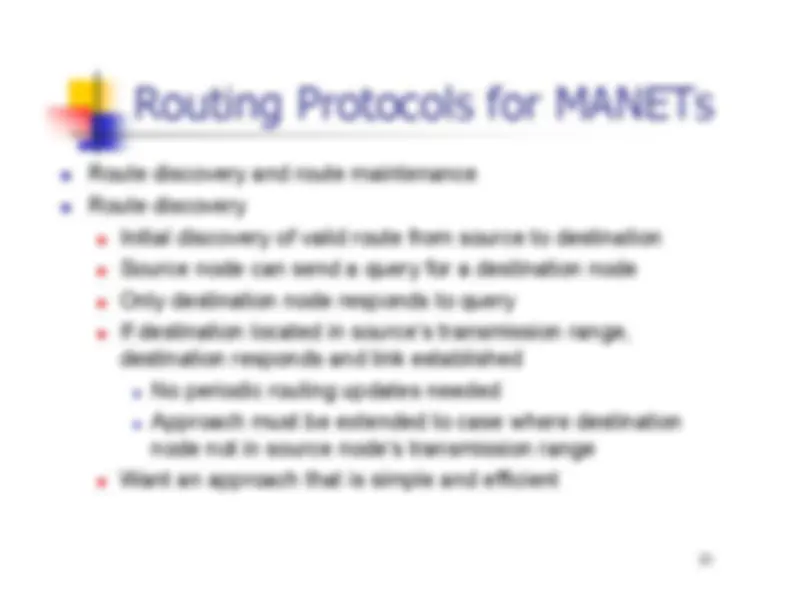
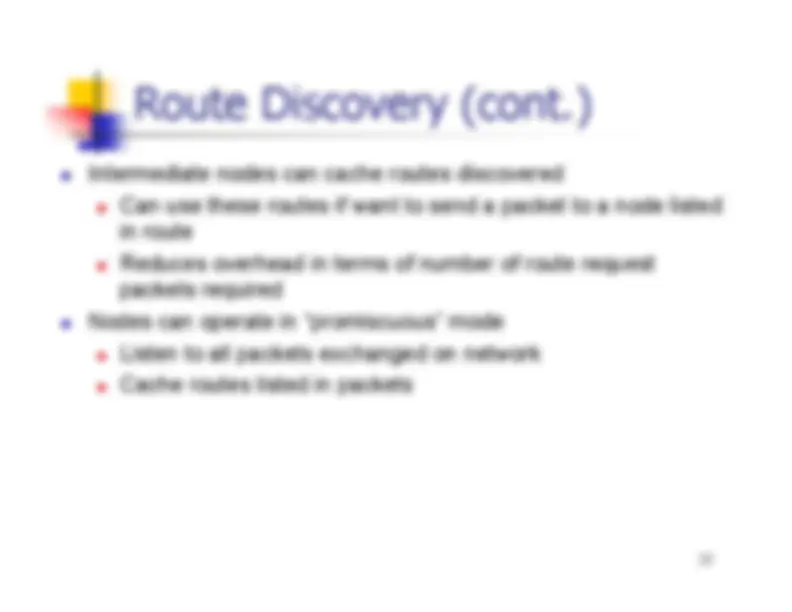
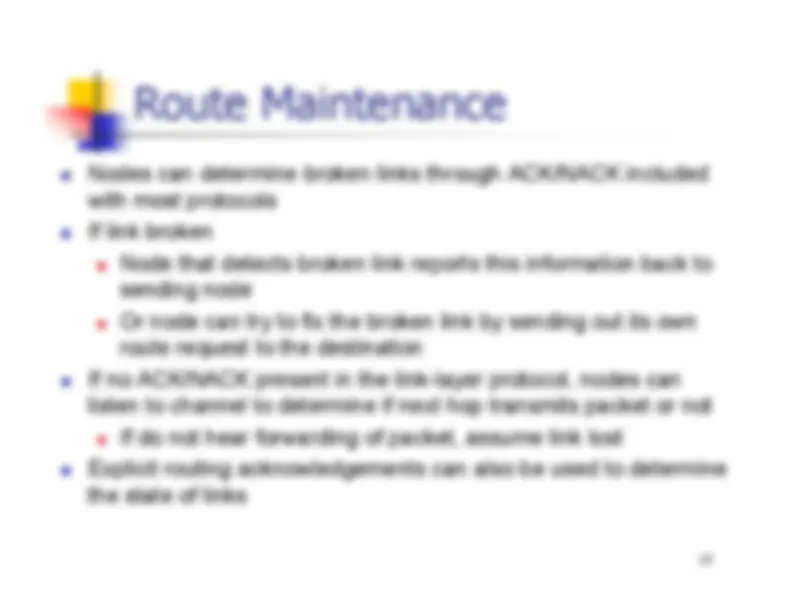
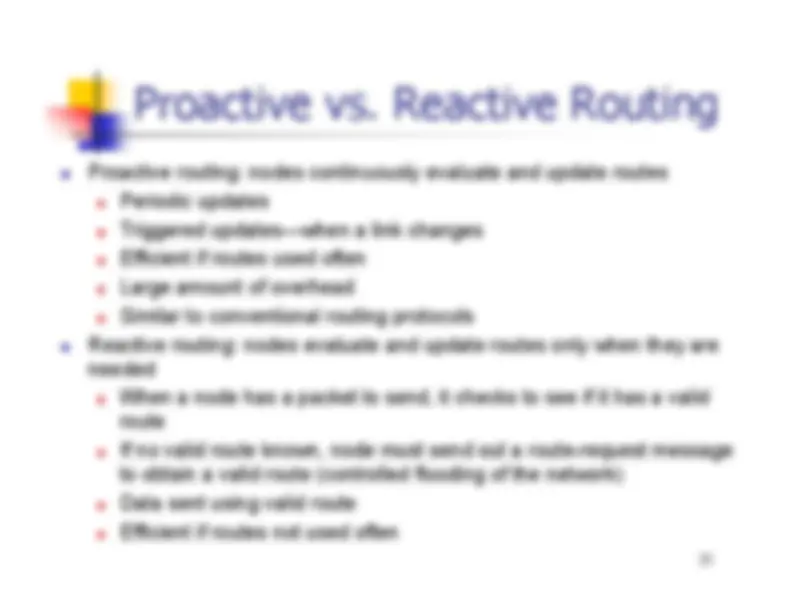
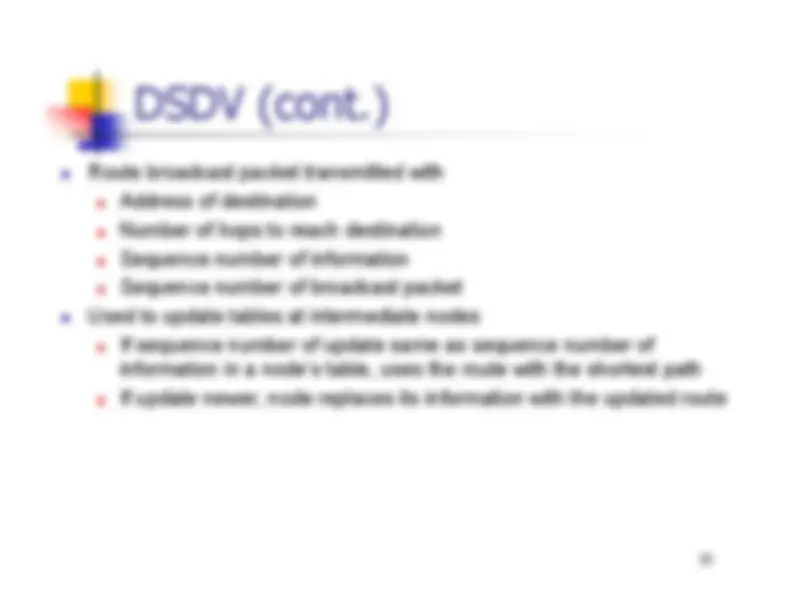
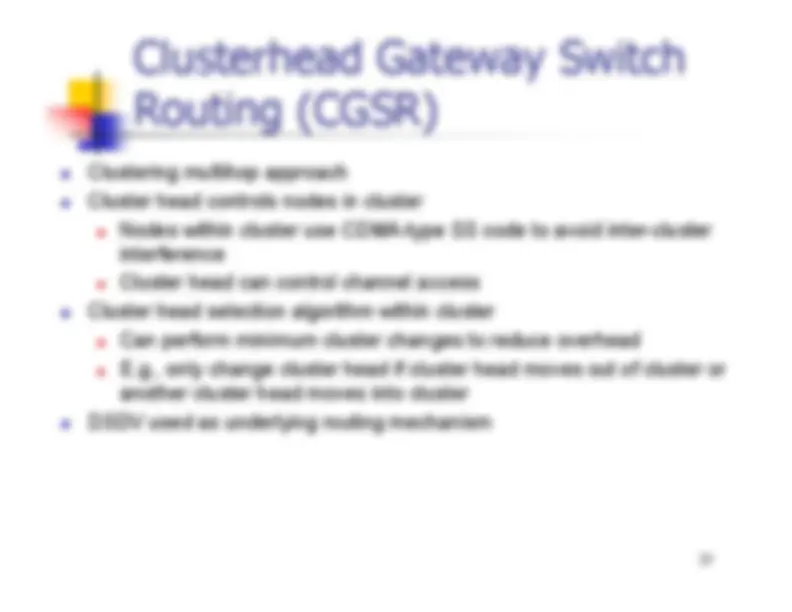
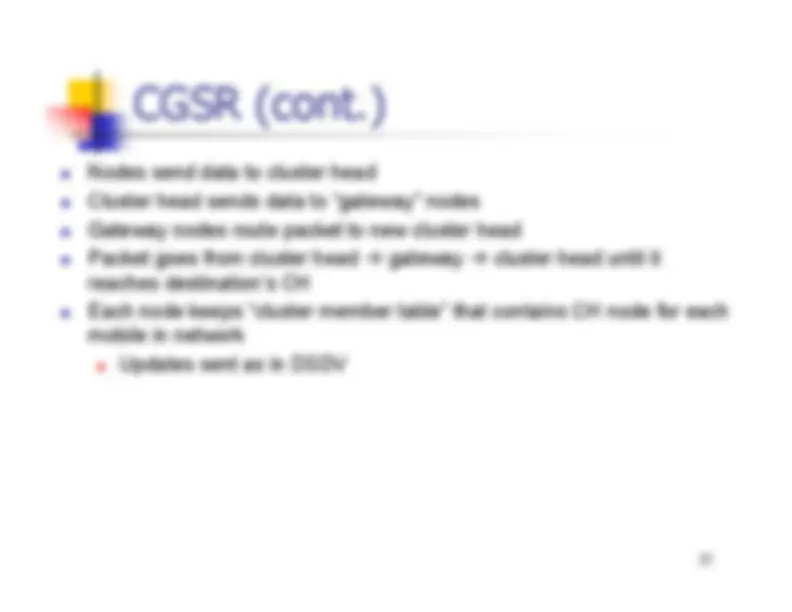
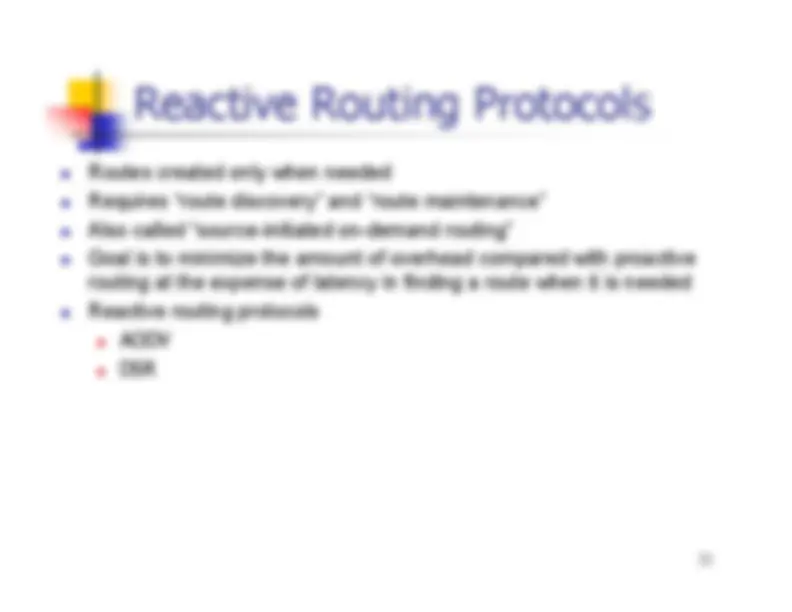
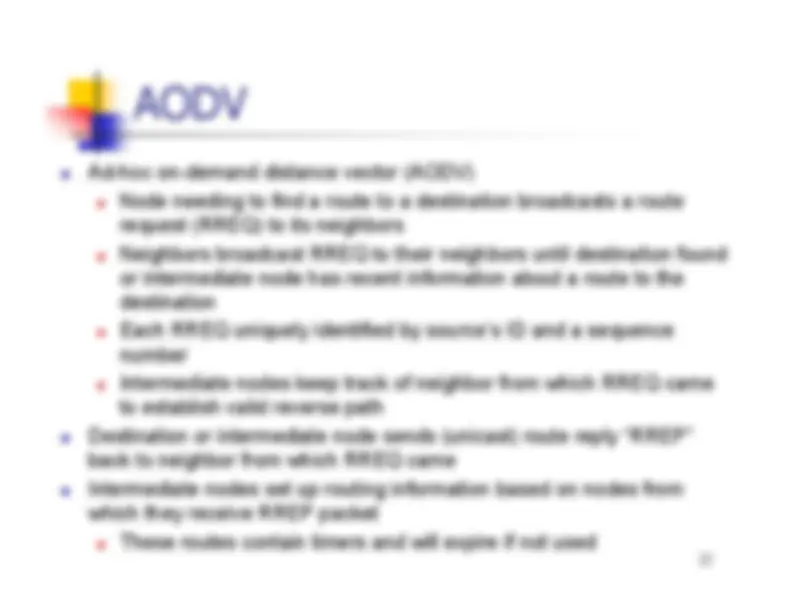
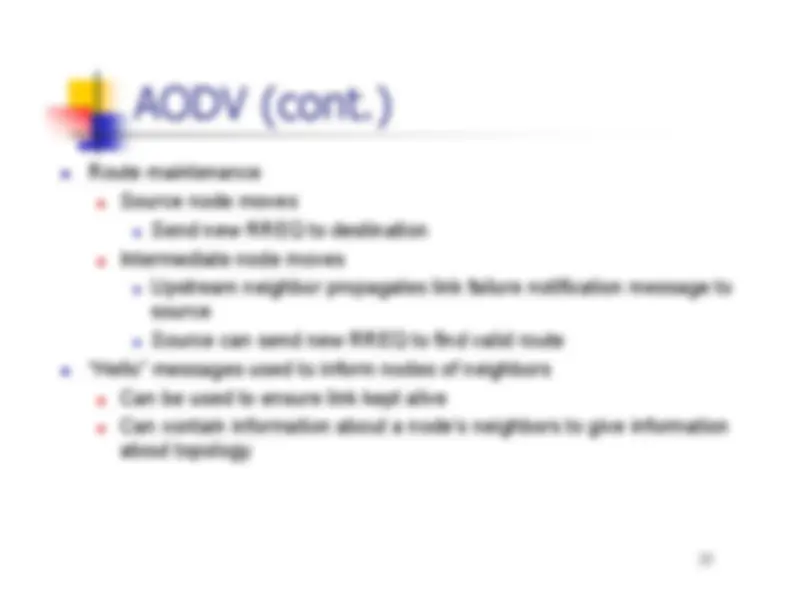
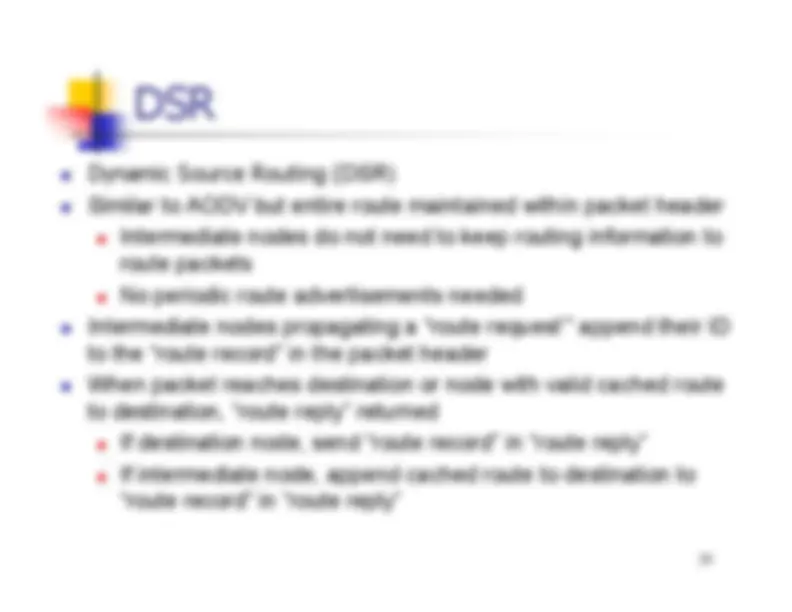
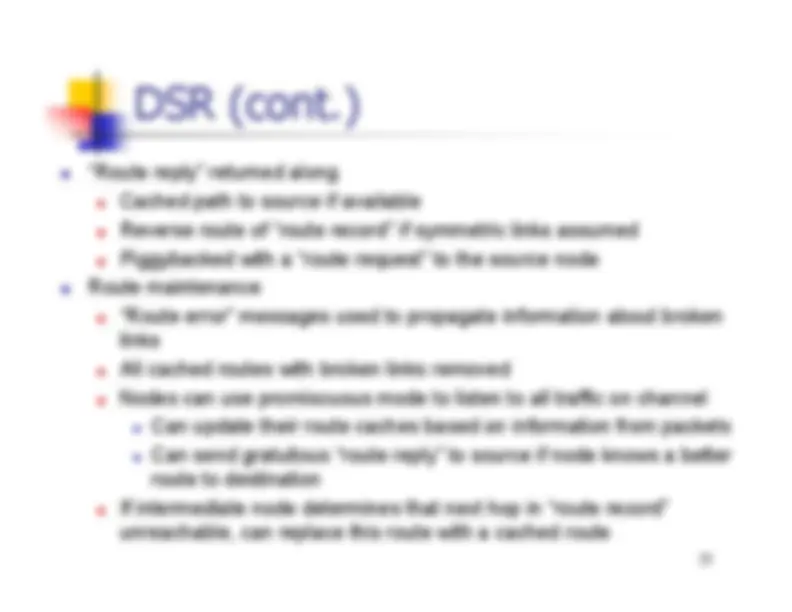
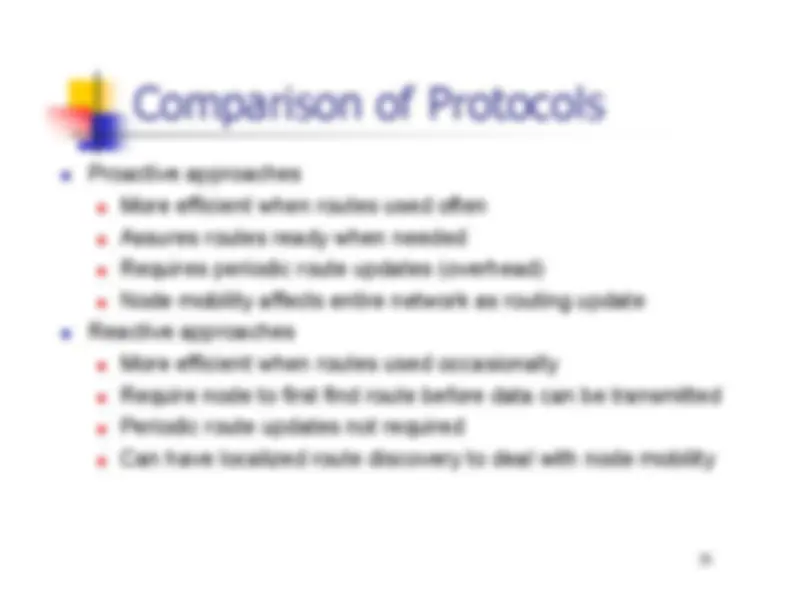
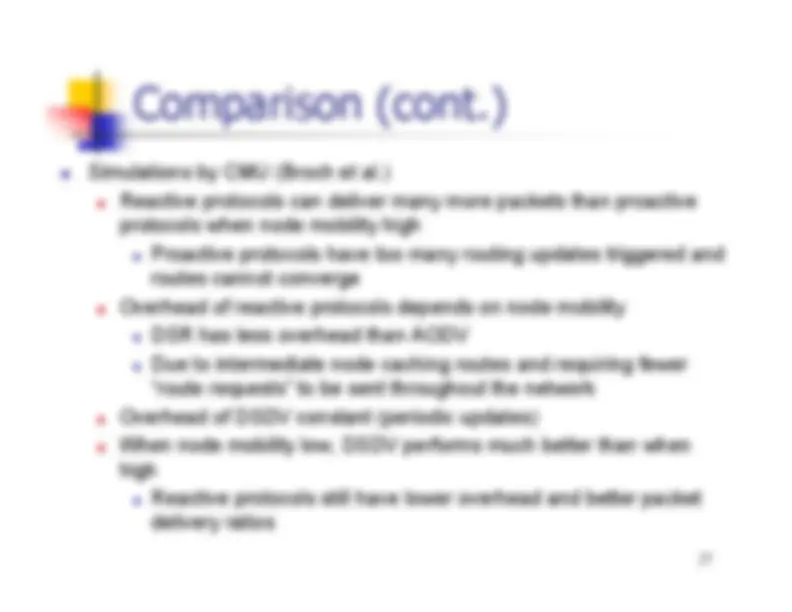
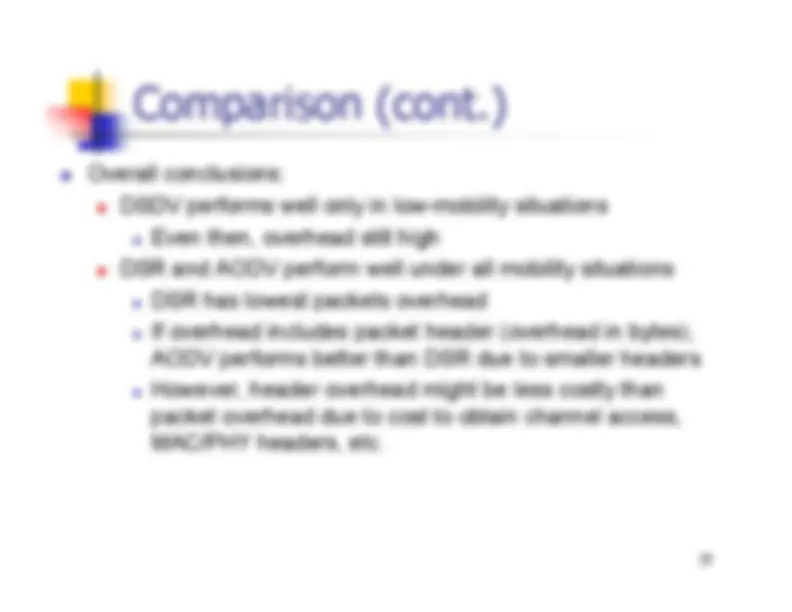
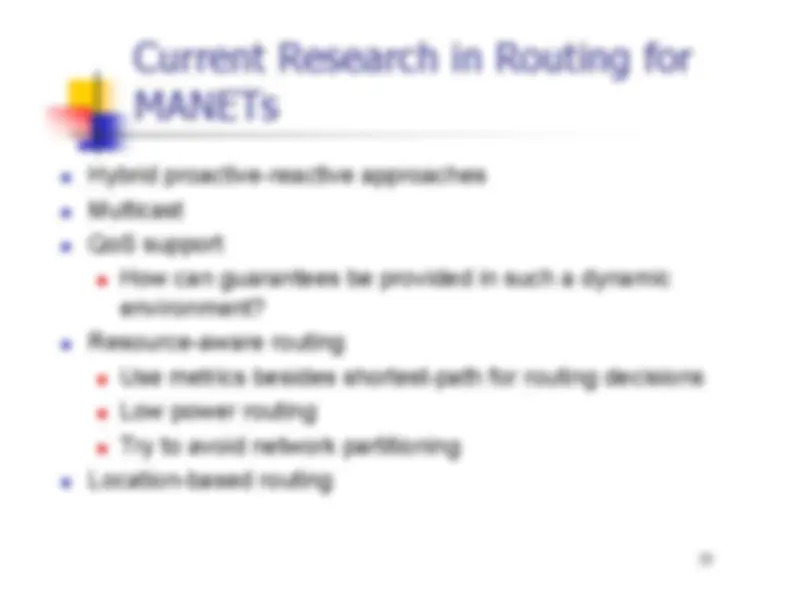
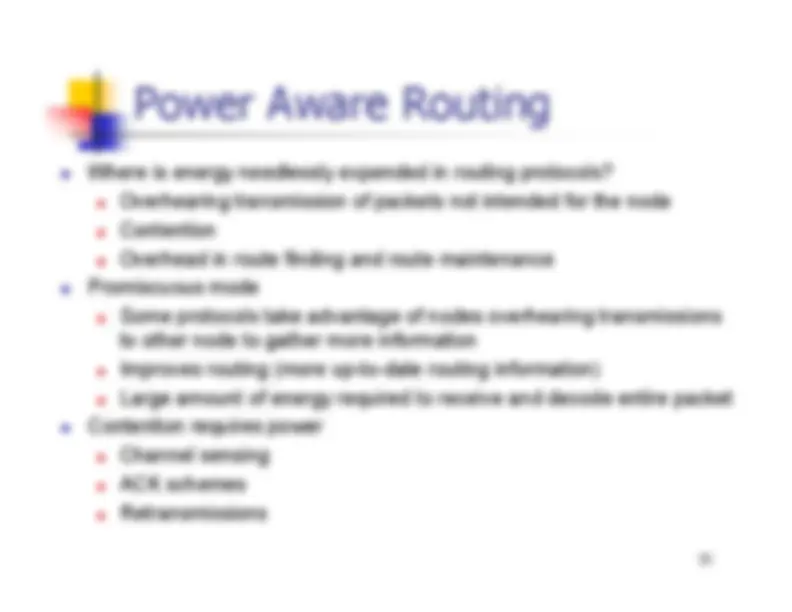
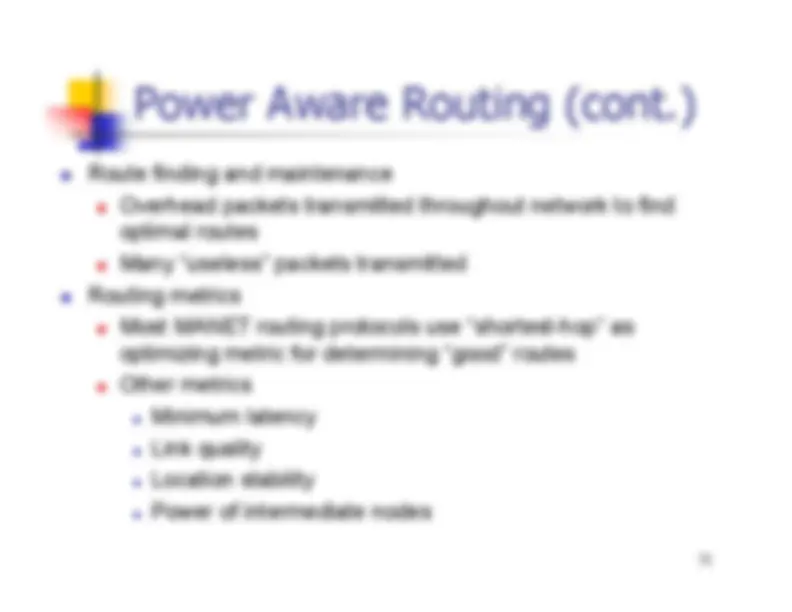
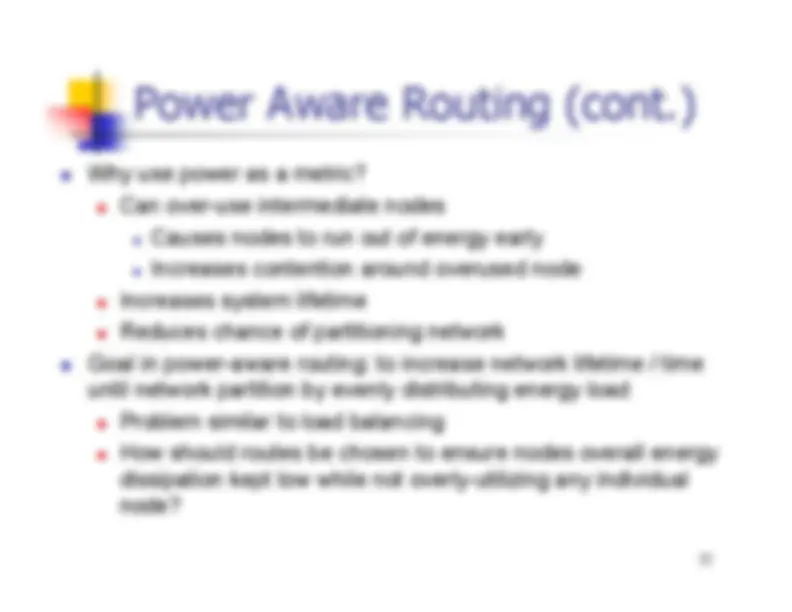

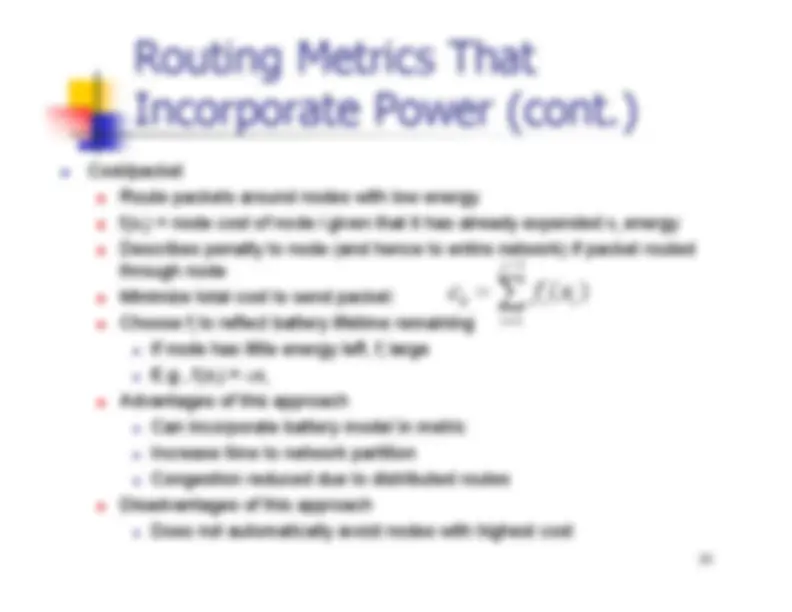
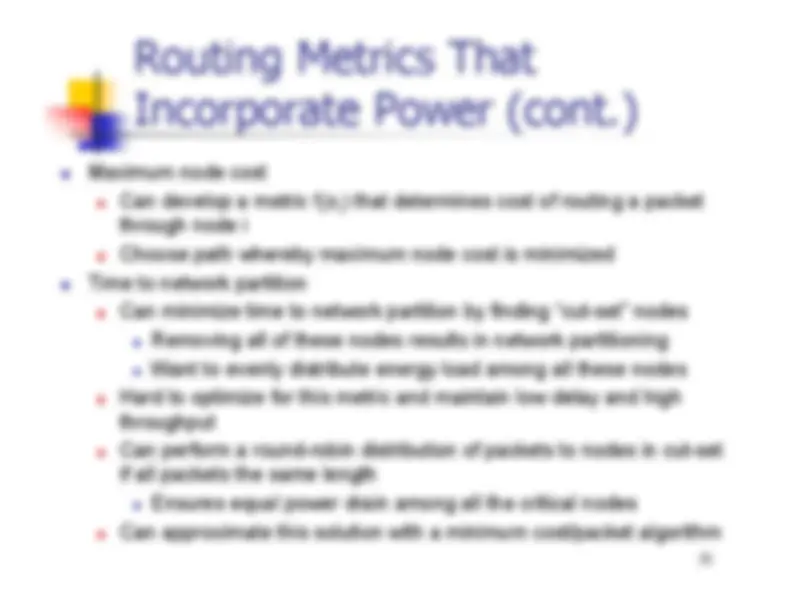
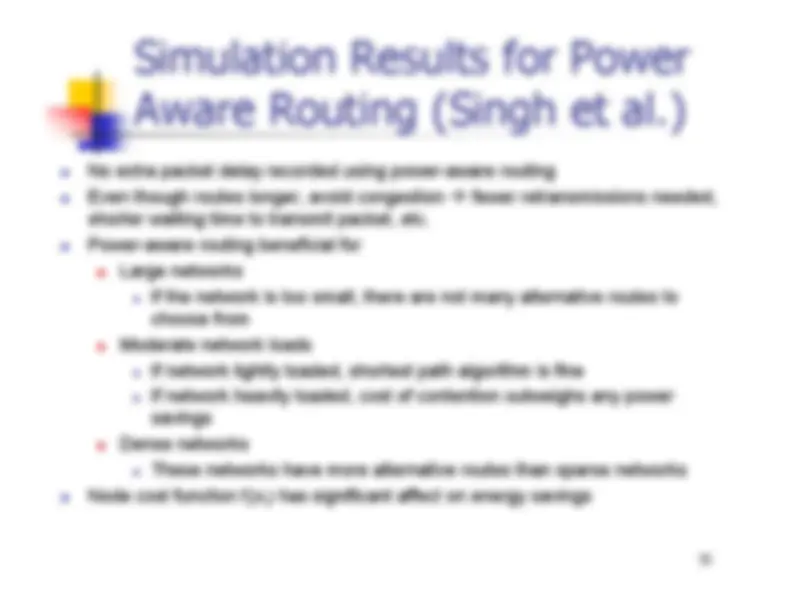
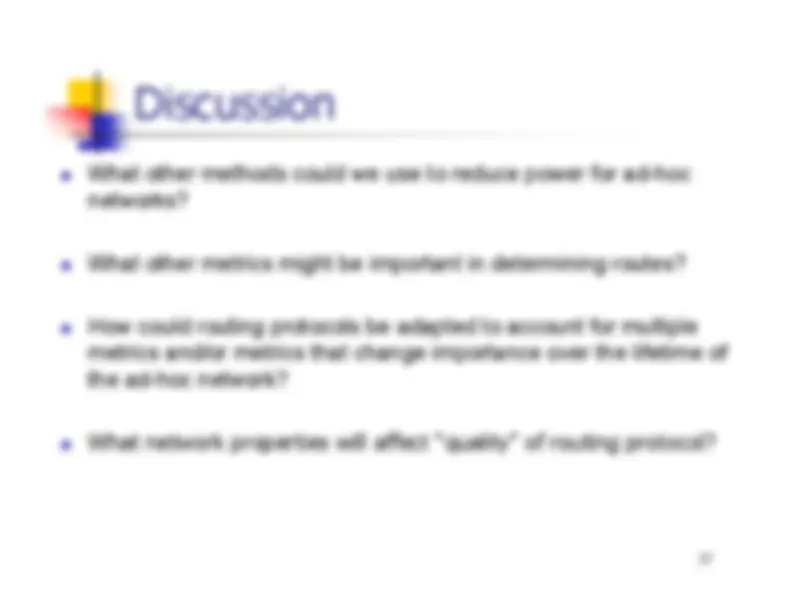


Study with the several resources on Docsity

Earn points by helping other students or get them with a premium plan


Prepare for your exams
Study with the several resources on Docsity

Earn points to download
Earn points by helping other students or get them with a premium plan
Community
Ask the community for help and clear up your study doubts
Discover the best universities in your country according to Docsity users
Free resources
Download our free guides on studying techniques, anxiety management strategies, and thesis advice from Docsity tutors
Mobile Ad Hoc Networks, Conventional Routing, Problems, MANET, Routing Protocols, Route Discovery, Route Maintenance, Proactive Routing, Reactive Routing, Destination Sequenced, Distance Vector, DSDV, Clusterhead, Gateway, Switch, Routing, CGSR, Reactive Routing, Ad Hoc, On Demand, Distance Vector, AODV, Dynamic Source Routing, DSR, Comparison, Power Aware Routing
Typology: Slides
1 / 37

This page cannot be seen from the preview
Don't miss anything!






























Reading: •^ “Routing Protocols for Ad Hoc Wireless Networks,” in
Ad Hoc Wireless
Networks: Architectures and Protocols, Chapter 7. • D. Johnson, “Routing in Ad Hoc Networks of Mobile Hosts
,” Proceedings of the
IEEE Workshop on Mobile Computing Systems and Applications, Dec. 1994. • E. Royer and C.-K. Toh, "A Review of Current Routing Protocols for Ad-Hoc Mobile Wireless Networks,"
IEEE Personal Communications Magazine, April
1999, pp. 46-55. • J. Broch, D. Maltz, D. Johnson, Y.-C. Hu, and J. Jetcheva, "A Performance Comparison of Multi-Hop Wireless Ad Hoc Network Routing Protocols,"
Proc.
Mobicom '98, Oct. 1998. • S. Singh, M. Woo, and C. Raghavendra, "Power-Aware Routing in Mobile Ad Hoc Networks,"
Proc. Mobicom '98 , Oct. 1998.
^ Definition^ ^
“A collection of wireless mobile hosts forming a temporary networkwithout the aid of any centralized administration or standard supportservices.” ^ Ad-hoc network topology is dynamic—nodes enter and leave thenetwork continuously ^ No centralized control or fixed infrastructure to support networkconfiguration or reconfiguration ^ Example scenarios for MANETs^ ^
Meetings Emergency or disaster relief situations Military communications Wearable computers Sensor networks
^ Distance vector routing^ ^
Each router has a table giving the distance from itself to all possibledestinations Each router periodically broadcasts its table to its neighbors^ ^ Neighbors will update their tables based on this information toensure they are using the shortest route to reach each destination To route a packet, router checks table to find next hop to destination Tradeoff in how often routing tables are exchanged^ ^ Too often
Æ^ large amount of overhead, excess BW and computational resources used Too infrequent
Æ^ sub-optimal or invalid routes (stale routes) ^ Can send routing table updates whenever information in the tablechanges due to a new link or a broken link
Problems with using ConventionalRouting in MANETs ^ Unidirectional links^ ^
^ Redundant links^ ^
Problems with using ConventionalRouting in MANETs ^ Periodic routing updates^ ^
^ One approach is to perform controlled flooding of the query^ ^
Nodes receiving query will append their address to the route beingrecorded in the packet header and broadcast updated packet to allneighbors^ ^ When a node receives a query, it checks to see if its address isalready in the header (indicating this packet was already floodedby this node)^ ^ If address present, node drops packet Each query labeled with unique “request ID”^ ^ Each node keeps a cache with request ID’s of packets it hasalready forwarded^ ^ Discards packets with request ID listed in node’s cache^ ^ Avoids duplicate queries sent throughout the network Node only propagates first copy of each route request packet it sees
^ Each node maintains consistent, up-to-date routing information in theform of a table with the next-hop to reach every node in the network ^ Changes in link state transmitted throughout the network to update eachnode’s routing table ^ Proactive routing protocols^ ^
^ Destination-sequenced distance-vector (DSDV)^ ^
Each node maintains a table with^ ^ All possible destination nodes^ ^ Number of hops required to reach that node^ ^ Next hop along route to that node^ ^ Sequence number Sequence number used to distinguish new routes from old routes Routing table updates transmitted throughout network ^ “Full dump” routing updates^ ^
Large packet that carries all routing information Transmitted infrequently when little change in existing links ^ “Incremental” routing updates^ ^
Contains only information that has changed since last routing update
^ Clustering multihop approach ^ Cluster head controls nodes in cluster^ ^
Nodes within cluster use CDMA-type SS code to avoid inter-clusterinterference Cluster head can control channel access ^ Cluster head selection algorithm within cluster^ ^
Can perform minimum cluster changes to reduce overhead E.g., only change cluster head if cluster head moves out of cluster oranother cluster head moves into cluster ^ DSDV used as underlying routing mechanism
^ Nodes send data to cluster head ^ Cluster head sends data to “gateway” nodes ^ Gateway nodes route packet to new cluster head ^ Packet goes from cluster head
Æ^ gateway
Æ^ cluster head until it
reaches destination’s CH Each node keeps “cluster member table” that contains CH node for eachmobile in network^ ^ Updates sent as in DSDV